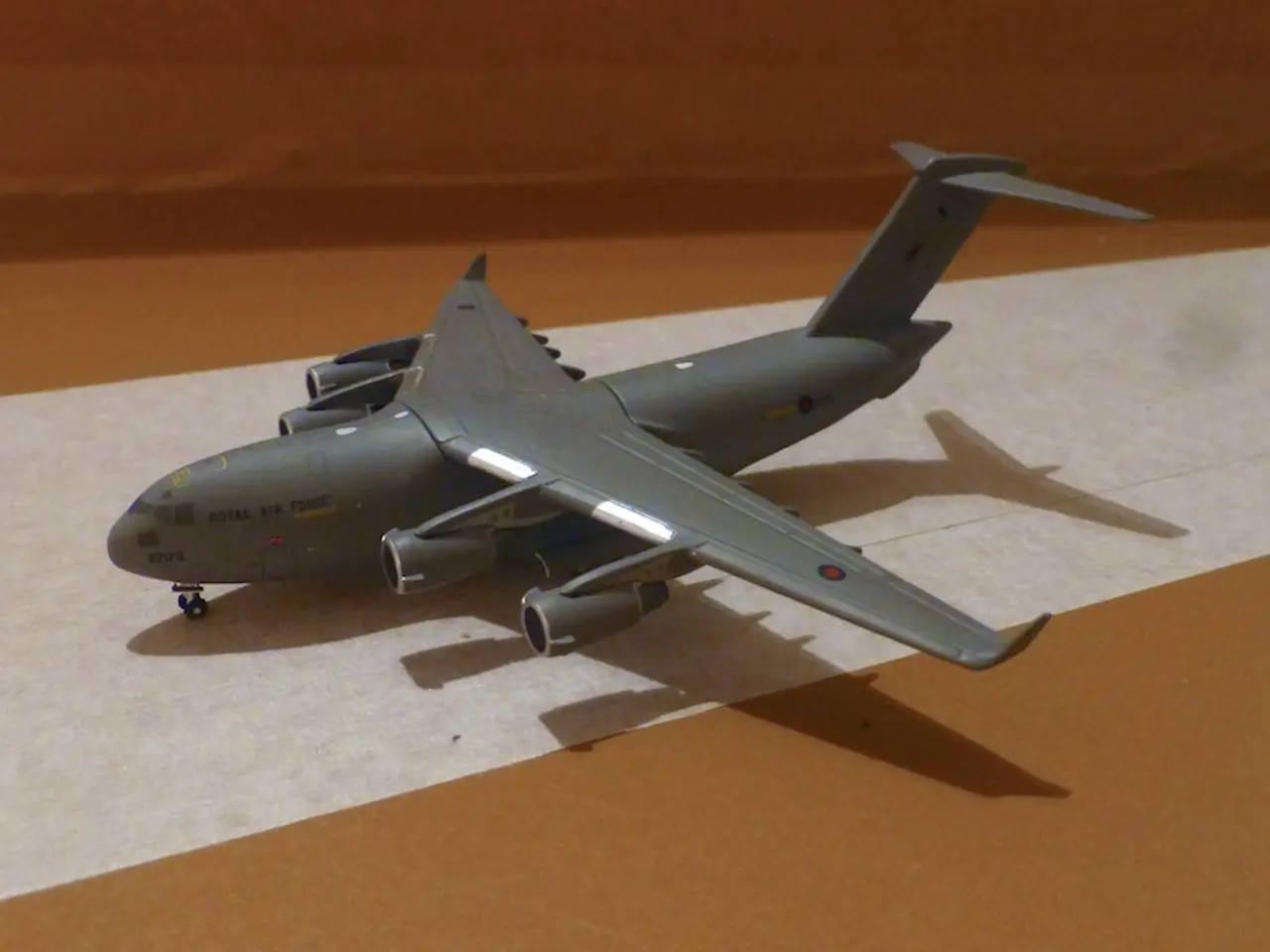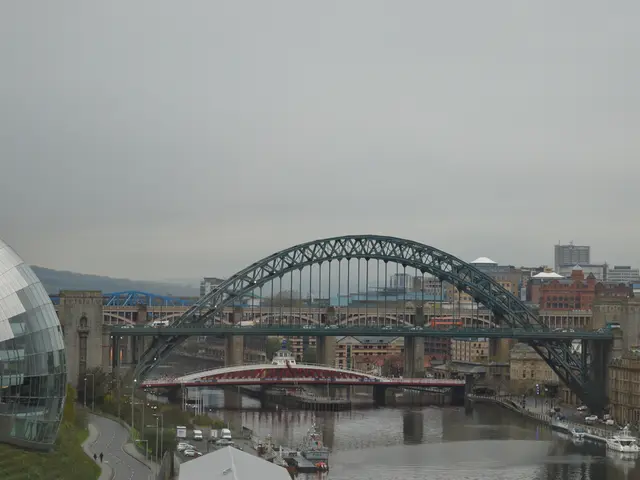Airbus prepares for the initial flight testing of a megawatt-class hydrogen fuel-cell engine
Airbus is making significant strides in its ZEROe project, a mission to develop a zero-emission commercial aircraft powered primarily by hydrogen fuel cell technology. The company has confirmed its commitment to this path following successful prototype and engine tests, focusing on hydrogen as the main power source and expanding hydrogen infrastructure at airports worldwide [1].
Cryogenic Storage and Engine Pod Configuration
While detailed design specifics from Airbus on these aspects are limited in publicly available information, hydrogen storage for aviation typically involves bulky cryogenic liquid hydrogen (LH2) tanks or compressed gaseous hydrogen cylinders. These tanks are usually integrated into the aircraft fuselage rather than the wings, affecting the aircraft's internal layout and capacity [3].
The engine pod configuration is likely to consist of fuel cell powertrains integrated into pods or nacelles, producing electrical power for propulsion motors. This mirrors the approach seen in other hydrogen projects where fuel cells power electric propulsion units [5].
Key Components and Processes
- The A380's internal space is sufficient to accommodate the demonstrator's needs without constraints.
- The liquefied hydrogen from the cryogenic tank is converted into a gaseous state, distributed to the fuel cell, and used in an electro-chemical reaction to produce direct electrical current.
- The direct electrical current is converted into alternating current, which powers electric motors that convert the electrical power into mechanical power for the propeller.
- The thermal energy generated by the fuel cell needs to be conveyed by a liquid cooling system to heat exchangers where it is dissipated into the ambient air.
- Water is produced as a byproduct of the electrochemical reaction and is expelled from an outlet at the back of the pod.
Demonstrator and Future Plans
Airbus is currently working on a megawatt-class fuel-cell engine and demonstrator, which could be tested in flight by 2026. The demonstrator will have a 10m long, 4m wide housing made of carbon fiber, crafted by an Airbus Atlantic team at the Technocentre de Nantes. The A380 MSN001 aircraft has been chosen as the 'host' for the hydrogen fuel-cell engine demonstrator [2].
The demonstrator will use Airbus' A380 MSN001 aircraft, modified externally to carry the fuel-cell engine pod and internally to install a cryogenic tank to contain liquefied hydrogen. The housing will contain up to four cryogenic tanks for liquid hydrogen.
Airbus is also developing the propelling system and the gearbox associated with the pitch control, a first for the company. The company is adopting a high-voltage distributed electrical architecture for up to 1000 Volts DC and creating a bespoke engine control system. Airbus is producing the distribution center and the motor controller unit internally [4].
The demonstrator will have emergency venting lines to expel hydrogen if needed. The engine pods in the fourth ZEROe concept contain hydrogen fuel cells that produce electricity through an electro-chemical reaction [6].
Airbus' ZEROe project is a significant step towards sustainable aviation, addressing the unique challenges of hydrogen fuel’s physical properties and aircraft performance goals [1][3][5]. The company's commitment and system-level demonstration lead the way in hydrogen aircraft propulsion design.
- The ZEROe project by Airbus, focusing on developing a zero-emission commercial aircraft, leverages hydrogen technology, particularly fuel cell tech, and incorporates it into its design.
- As part of the project, Airbus is working on a demonstrator using hydrogen fuel cell engines and cryogenic tanks for liquid hydrogen storage, aiming to test the demonstrator in flight by 2026.




